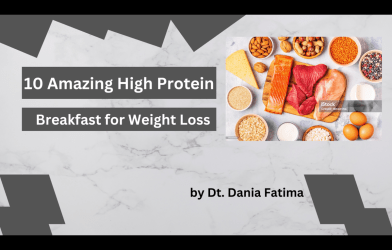Table of Contents
Introduction
Crash diet plan for 15 Days. Losing weight quickly is a desire many individuals have, and the concept of crash dieting often comes up as a solution. A crash diet is a structured eating plan designed to limit calorie intake drastically over a short period, generally resulting in rapid weight loss. However, it’s crucial to understand the nuances, benefits, and risks that come with such an approach.
Understanding Crash Diets
Crash diets involve significantly reducing the number of calories consumed, often to less than 1,000 calories per day. These diets typically focus on a limited variety of foods, often high-protein and low-carbohydrate, to trigger quick fat loss. Examples of common crash diets include juice fasts, the military diet, and the cabbage soup diet.


The Science Behind Crash Diets
The initial weight loss from a crash diet is typically water weight. When carbohydrate intake is drastically reduced, glycogen (the storage form of glucose) levels in the liver and muscles deplete. Glycogen is stored with water, and as it is used up, water is also lost, leading to a significant drop in weight on the scale. Fat loss does occur over time if the diet is maintained, but muscle loss can accompany it without adequate proteinintake and exercise.
Potential Benefits of Crash Diet plan
- Rapid Weight Loss: For individuals needing to lose weight quickly for medical reasons or upcoming events, crash diets can be effective in the short term.
- Dramatic Results: The rapid loss of weight can be motivating, potentially kick-starting a longer-term commitment to healthier eating.
- Simplicity: Crash diets often come with simple, straightforward guidelines, making it easy to follow.
Risks and Downsides of Crash Diet plan
Nutrient Deficiency
Crash diets often lack essential nutrients due to the restricted variety of permitted foods. Prolonged adherence can lead to deficiencies in vitamins and minerals like calcium, iron, and vitamin D.
Muscle Loss
Low-calorie intake can result in the body breaking down muscle tissue for energy. Loss of muscle mass can slow down metabolism, making it easier to regain weight once normal eating resumes.
Metabolic Slowdown
Severe caloric restriction can cause the body’s metabolic rate to slow down as it tries to conserve energy, thwarting long-term weight loss efforts.
Psychological Impact
Crash dieting can lead to an unhealthy relationship with food and contribute to eating disorders. The extreme deprivation followed by potential binge eating can create a destructive cycle.
Famous Crash Diet Plans
- Juice Fasts: These involve consuming only fruit and vegetable juices for a period, often three to seven days.
- The Military Diet: A three-day meal plan combining limited, low-calorie foods purported to kick-start metabolism.
- Cabbage Soup Diet: A week-long diet centered around consuming cabbage soup, supplemented by a few other low-calorie foods.
Guidelines for a Safe Crash Diet Plan
If you decide to pursue a crash diet, follow these guidelines to minimize risks:
- Hydration: Ensure adequate water intake to stay hydrated.
- Short Duration: Limit crash dieting to a maximum of one to two weeks.
- Nutrient Supplementation: Consider taking multivitamins to prevent deficiencies.
- Medical Supervision: Consult a healthcare provider before and during the diet.
Transitioning to a SustainableCrash Diet Plan
After the initial period of crash dieting, transitioning to a sustainable and balanced diet is crucial. Here’s how to make the shift without regaining the lost weight:
- Gradual Increase in Calories: Slowly increase caloric intake to prevent shock to your system and avoid rapid weight gain.
- Balanced Meals: Focus on a diet rich in whole grains, lean proteins, healthy fats, and vegetables.
- Regular Exercise: Incorporate strength training and cardiovascular exercise to support metabolic health and muscle maintenance.
- Mindful Eating: Practice mindful eating habits to foster a healthy relationship with food.
Conclusion
While crash diets can offer quick weight loss, they come with significant risks and are not sustainable long-term solutions. They should be approached with caution, limited to short durations, and followed with a transition to a balanced and nutritious diet. Always consult with a healthcare provider before embarking on any extreme diet plan. Ultimately, sustainable weight loss and health come from consistent, healthy eating habits and regular physical activity.
Frequently Asked Questions (FAQs)
Are crash diets effective for long-term weight loss?
No, crash diets are not effective for long-term weight loss. They can lead to quick initial weight loss, mostly water weight, and muscle loss, but are not sustainable. Long-term weight loss is best achieved through balanced diet and regular exercise.
Can I exercise while on a crash diet?
It is generally not recommended to engage in intense exercise while on a crash diet due to the low calorie and nutrient intake, which may not provide sufficient energy for physical activity. Light activities like walking or stretching could be acceptable.
How long should a crash diet be followed?
Crash diets should only be followed for a very short period, typically one to two weeks, to minimize health risks. Prolonging a crash diet can result in severe nutrient deficiencies and metabolic issues.
What are the signs that a crash diet is affecting my health negatively?
Symptoms like dizziness, extreme fatigue, hair loss, muscle weakness, and irregular menstrual cycles could indicate that the crash diet is negatively affecting your health. If any of these symptoms occur, it is important to stop the diet and seek medical advice.
How can I maintain the weight loss achieved from a crash diet?
To maintain weight loss after a crash diet, transition to a balanced diet gradually, increase physical activity, and practice mindful eating. Monitoring caloric intake and focusing on whole foods can help sustain weight loss.

















